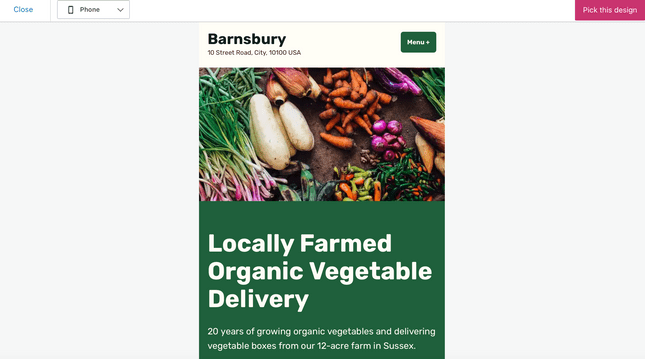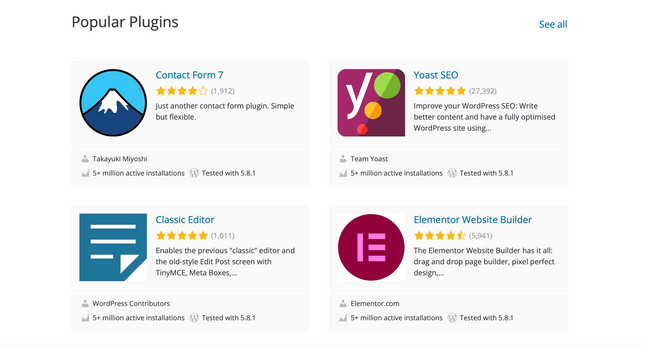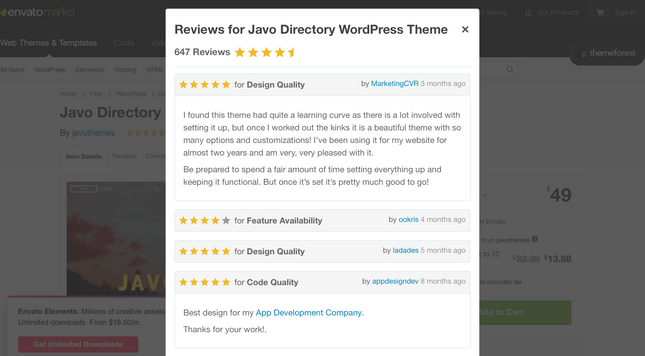How to Choose a WordPress Theme | 7 Rules to Follow
If you click to purchase a product or service based on our independent recommendations and impartial reviews, we may receive a commission. Learn more
Choosing a WordPress theme can be an overwhelming task. There are thousands of different themes available – both free and paid – so deciding which one is right for you can feel impossible.
After all, your theme is important. It dictates how your WordPress website will look to users, as well as how you’ll represent your brand to the billions of worldwide internet users who may land on your website. You should view your website as the shopfront of your business – ergo, it needs to be appealing and on-brand.
Whilst you can change your theme further down the line, it’s not the easiest of tasks, and will require a serious amount of effort and time – as well as likely causing some downtime for your website. Choosing the right one from the get-go, therefore, is important.
We’ve put together seven easy rules to follow when choosing a WordPress theme, which should result in you making the perfect choice.
1 List Your Requirements
The first step to choosing a WordPress theme is to decide what it is that you want from your theme. Take the time to think about the aims of your WordPress website. For example, do you need it to have a blog page? Do you want to embed videos? Are you planning to offer sign-ups or capture customer data?
Once you’ve established what you need from your theme, you can make the first steps to shortlisting potential options. After all, there’s no point starting to look at WordPress themes unless you know what you need yours to provide.
At this stage, it’s also worth thinking about the kind of budget you’re working with. There are free theme options available, and – if your requirements are fairly basic – you may find your ideal theme costs absolutely nothing. On the other hand, paid-for themes vary in price, and the cost can increase quickly for feature-rich WordPress theme options.
A good tip is to take a look at existing WordPress websites that are similar to what you want to create – and that operate within your niche – and evaluate their themes. What do you like? What do you think could be improved? This will help you to create your theme ‘checklist’, and work from there.
2 Ensure it’s Responsive
A responsive theme is one that looks and performs to the same standard on a mobile device as it would on a desktop.
Responsive themes will adapt to fit the screen of whatever device a visitor is using to access your website, without losing any of the functionality or quality of the user experience.

Of the 4.66 billion active internet users in the world, a whopping 92.6% of them use mobile devices to access the internet. So if your theme isn’t responsive, you’re going to be losing out on a lot of potential traffic.
A responsive theme ensures that every visitor to your website, no matter how they’ve chosen to access it, will have a good experience – making them much more likely to return.
There’s another reason why a responsive theme is so important. In 2019, Google announced it would be moving to “mobile-first” indexing. What this means is that the search engine will use the mobile version of your website to index and rank it. If it’s not up to scratch, you won’t stand much chance of appearing in Google’s search results.
3 Opt for Simplicity
When choosing a WordPress theme, it can be easy to get tempted by an all-singing, all-dancing design that’s full of cool quirks and features.
WordPress themes come with various color, font, animation, and layout options that may look exciting, but can end up being off-putting to users.
Remember, you’re designing a WordPress website for your audience. Think about how you would respond if you were trying to read content on a website that was filled with annoying animations and pop-ups, or that used different colors and fonts throughout.
If there’s too much going on within your theme, you’ll end up confusing your audience, they won’t be able to find the content they’re looking for, and they’ll end up leaving (and more often than not, finding what they need on another website!).
Whilst having a website that looks good is important, remember what the main aims of your website are, and make sure the theme you choose isn’t hindering your online goals.
4 Make Sure it Supports Plugins
Choosing a theme that supports key WordPress plugins is essential if you want to provide the best functionality and user experience.
When choosing a theme, remember that it’s often plugins that will help to elevate it and provide the functionality that you’re looking for.
WordPress plugins can help to improve various aspects of your website, including design and performance.

Some of the most popular and useful WordPress plugins include:
- Yoast SEO (Helps to improve the overall SEO of your website).
- Jetpack (Includes website analytics, spam filters, and automated social media posting).
- Woocommerce (Transforms your WordPress website into an online shop).
- WP Forms (Creates a contact form with a dynamic drag-and-drop interface).
It’s a good idea to make sure any theme you choose supports these WordPress plugins, as well as any others that you determine to be essential for your site. If you’re unsure, contact the theme developer to ask which plugins your chosen WordPress theme supports before you commit.
5 Choose Something You Can Customize
The great thing about using WordPress for your website is that you can customize almost every theme to look exactly how you want it to.
When selecting a WordPress theme, make sure you pick one that offers you the option to customize elements such as the font, colors, images, layout, and pages.
Customizing your theme will allow you to introduce your brand to your website, allowing you to ensure that your business’s colors and style runs through every page.
Picking a theme that you can customize also means that you can decide exactly which pages your website includes. You may decide that an about page isn’t necessary, or you may want your blog page to be the main focus. Whatever navigation layout you prefer, you should be able to create it with a customizable WordPress theme.
6 Read the Reviews
When you buy anything online it’s always a good idea to read the reviews – and buying a WordPress theme is no different. After all, those reviews are there for a reason – so make use of them to help inform your purchasing decision.
When you’ve found a theme that you like the look of, take some time to read the reviews to find out what real-life users think about it.

The last thing you want to do is download and install a theme only to discover it’s out-of-date, or full of malicious code. Low quality or out-of-date themes can leave your website vulnerable to cyber attacks, as well as impacting performance elements of your website, such as page load speed.
If a theme has no reviews, it’s probably best to avoid it and choose a different one. The more high-rated reviews a theme has, the more confident you can be that it will enhance your web presence.
7 Check it’s Regularly Updated
It’s essential that any theme you choose for your WordPress website is regularly updated. Core WordPress software is constantly being tweaked, therefore you need to make sure that the developers of your theme keep it up to date accordingly.
Themes need to be updated regularly in order to solve any bugs or security issues, and to make sure that the theme is running at its optimal performance level.
A good guideline when it comes to theme updates is to select a theme that has been updated in the past six months. This timeframe suggests that the developer keeps the theme regularly updated, and you can be confident that you won’t be installing something on your website that’s already out of date.
How to Choose a WordPress Theme: Summary
There are thousands of WordPress themes to choose from, which can be overwhelming. But remember, the theme you choose will have a major impact on your WordPress website – so you need to think carefully about which one you choose.
There’s more to choosing a WordPress theme than just selecting one that looks nice, so hopefully this article will help to guide you through the process. Good luck, and enjoy!




Leave a comment